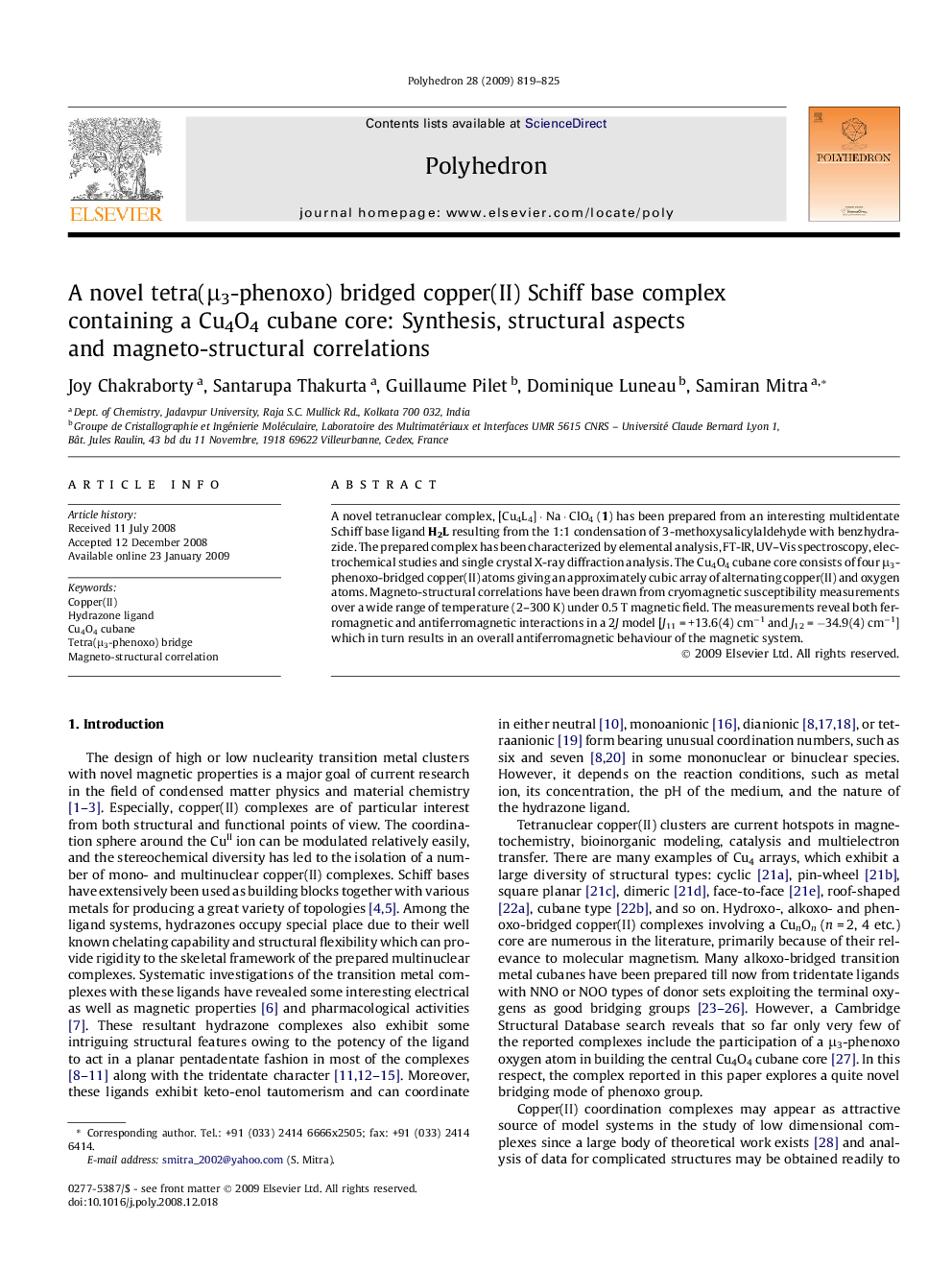| Article ID | Journal | Published Year | Pages | File Type |
|---|---|---|---|---|
| 1335055 | Polyhedron | 2009 | 7 Pages |
A novel tetranuclear complex, [Cu4L4] · Na · ClO4 (1) has been prepared from an interesting multidentate Schiff base ligand H2L resulting from the 1:1 condensation of 3-methoxysalicylaldehyde with benzhydrazide. The prepared complex has been characterized by elemental analysis, FT-IR, UV–Vis spectroscopy, electrochemical studies and single crystal X-ray diffraction analysis. The Cu4O4 cubane core consists of four μ3-phenoxo-bridged copper(II) atoms giving an approximately cubic array of alternating copper(II) and oxygen atoms. Magneto-structural correlations have been drawn from cryomagnetic susceptibility measurements over a wide range of temperature (2–300 K) under 0.5 T magnetic field. The measurements reveal both ferromagnetic and antiferromagnetic interactions in a 2J model [J11 = +13.6(4) cm−1 and J12 = −34.9(4) cm−1] which in turn results in an overall antiferromagnetic behaviour of the magnetic system.
Graphical abstractA novel tetranuclear copper(II) complex [Cu4L4] · Na · ClO4 has been synthesized exploiting the tetradentate donor set of a hydrazone ligand H2L, N′-(2-hydroxy-3-methoxybenzylidene)benzohydrazide. The Cu4O4 core consists of a rare μ3-phenoxo-bridged copper(II) atoms giving an approximately cubic array of alternating copper and oxygen atoms. Cryomagnetic susceptibility measurements over a wide range of temperature (2–300 K) demonstrate both ferro- [J11 = +13.6(4) cm−1] and antiferromagnetic [J12 = −34.9(4) cm−1] interactions in a 2J model resulting in an overall antiferromagnetic behaviour of the magnetically coupled system.Figure optionsDownload full-size imageDownload as PowerPoint slide
